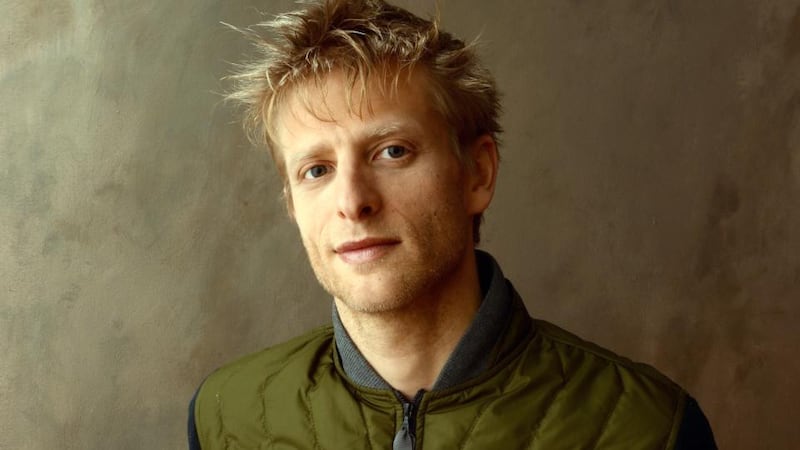It started with a skull in the desert, and before that with a website inviting testimonies on the theme of resistance: resistance against political oppression, resistance against economic inequality, resistance against boundaries. The platform would bring together several film-makers and a shared idea about grassroots rebellion.
"We were looking for a story that would illustrate how big economic and political decisions can impact on people thousands of miles away," explains documentarian Marc Silver, who has previously investigated the impact of riots and the Olympics on London.
The stories came from all over the world: a South African woman who placed symbolic stones to delineate her home, a Spanish person who confronted the bank lending system. And that skull in the desert.

It's called Who Is Dayani Cristal?, which is the central quest for Silver's award-winning documentary. Working alongside Mexican superstar-turned-activist Gael García Bernal, the film seeks to uncover the life behind the body of a migrant.
The quest is twofold: while Silver tracks the efforts of search and rescue police, forensic experts and morgue attendants, Bernal retraces the dead man’s last steps, a journey that snakes past countless dangers for more than 2,000 miles.
“I will never understand the extent of the dangers he faced,” notes Bernal. “I can only try to retrace his steps and see where they take me.”
Those risks include kidnappers, perilous river crossings and hanging on to the top of a Mexican freight train known as “La Bestia”. And that’s before one comes up against border control.
“We had passports and credit cards and support that’s way beyond what any migrant has,” says Silver. “In physical terms, it was still a challenge. The trains are dangerous and we were hyper-aware of that as we had spent time interviewing amputees who have fallen from the carriages. The border region is fraught with tension. We had to leave one of the locations where we filmed.
“But the main challenges were emotional and came from speaking to migrants who were about to make that journey. You had to worry about what lay ahead for them.”
Silver’s forensic travelogue proved as complicated as the journeys it sought to chronicle. In order to obscure their origins, migrants seldom carry identifying documents or marks. It falls to a small, dedicated team of investigators from the Medical Examiner’s Office in Tucson to determine the identities of those who have died crossing the border. There is no unified procedure or agency to investigate remains around the US-Mexico border, and the migrants can come from anywhere in Mexico, Guatemala or Honduras.
“As soon as the search and rescue police got a call, I would jump in my car and drive to the desert,” says Silver. “Then I would track the bodies from there using the case number as they went through the morgue and were processed by the Mexican consulate. At one time I was tracking six or seven cases, but filming many more. Ironically, the Dayani case was the first body that I filmed.”
Over the past decade, more than 2,000 bodies have been recovered from the Sonora Desert in Arizona and brought to the morgue at Pima County. Of these, 700 have never been identified. When Silver first filmed the body of man with the words “Dayani Cristal” tattooed across his chest, the odds of determining his identity seemed remote. But some excellent detective work soon pinpointed the man as Honduran. The film’s heart-breaking final sequence reveals the significance of the tattoo.
“Once we knew he was Honduran and not Mexican,” says the director, “the Honduran government set up introductions to the family. So when I returned with the coffin from the US to Honduras, the family knew I would be there and that was okay with them. I spent a few weeks in the village afterwards, and there have been more trips since.”
By way of a memorial to this onceanonymous migrant, Silver, Bernal and the film’s producers immediately entered into negotiations with the family and community left behind.
“It’s very rare for this kind of film to ever make any money,” says Silver. “But from that first visit we were keen to work out something that is of benefit to them, given that this is their story. So the following year they discussed what they needed as a community. We are still looking for another $20,000 but we made $50,000 already to pay for a water supply system and a further $30,000 for a school. That is currently being built.”
There are complex issues at the heart of Who Is Dayani Cristal?. The film quotes forensic anthropologist Bruce Anderson: "The problem is all economic. We're dangling the carrot in grocery stores, in hotels and service industries . . . We benefit from a blue-collar labour force that has brown skin." Mostly, though, the film studiously avoids politics and proselytising.
“We did a load of interviews to understand the politics, which we hosted on the website,” says Silver. “But we didn’t want to bring that kind of talking-head politics into the film. We had this sort of unwritten rule that all the people in the film had been in touch with the dead person in some way. They’re people in morgue or at various consulates and, of course, the family.
“My thinking was there’s enough left- and right-wing opinion on the subject, particularly in the US. What seemed to be lacking was human empathy or a sense of universality.”


















